10-2 Developmental Indicators
A – Review Developmental Domains
In the next section, we are going to take all that we’ve learned about children’s development and apply it to a day in an infant and toddler early learning program.
We will watch a series of video clips that follow children as they go through everyday experiences, such as mealtime or nap time. In small groups, you will use what you have learned about child development to identify what skills children are building during everyday interactions.
You will use the Head Start Early Learning Outcomes Framework’s five developmental infant and toddler domains and the skills children are developing in each to identify children’s development and learning in each of the videos.
Before we do that, review each domain.
As you know, there are five developmental infant and toddler domains outlined in the framework:
- Approaches to Learning
- Social and Emotional Development
- Cognition
- Language and Literacy
- Perceptual, Physical, and Motor Development
Approaches to Learning
In this section, we’ve talked about the infant and toddler Approaches to Learning domain. This domain focuses on the development of skills and behaviors that children use to learn about the world. This domain includes the four subdomains Emotional and Behavioral Self-regulation, Cognitive Self-Regulation, Initiative and Curiosity, and Creativity. It covers the development of skills that are necessary to acquire new knowledge.
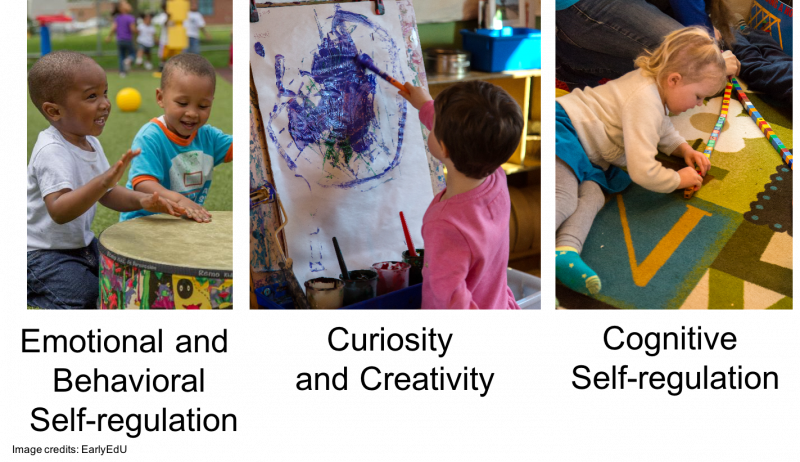
Children exhibit behavior in these subdomains as seen in their emotional reactions, their behavioral choices, and their ability to focus their attention. For example, the framework indicates that by age 3 children:
- Have learned to use strategies, such as to seek contact with a familiar adult or remove oneself from a situation, to handle strong feelings and emotions (emotional and behavioral regulation).
- Should be able to maintain focus and attention on a simple task or activity for short periods (cognitive regulation, executive functioning).
Social and Emotional Development
The infant and toddler Social and Emotional Development domain focuses on a child’s ability to create meaningful relationships with other people and to express, recognize, and manage their own and other people’s emotions. This domain includes four subdomains: Relationships with Adults, Relationships with Other Children, Emotional Functioning, and Sense of Identity and Belonging.
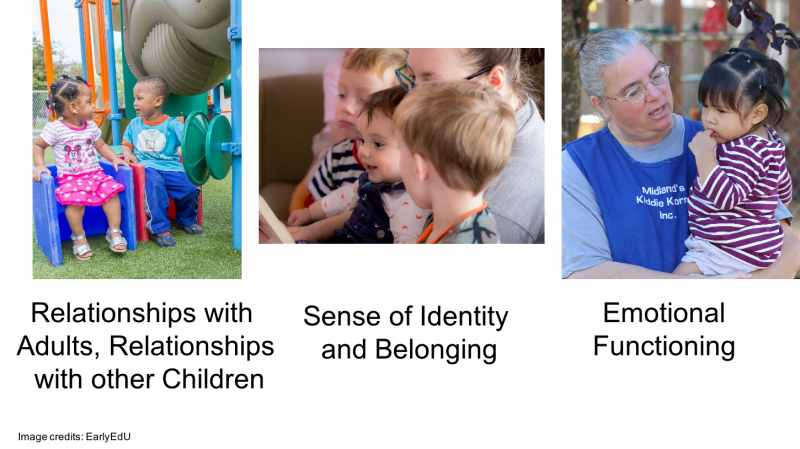
Language and Literacy
The infant and toddler Language and Literacy domain focuses on the development of a child’s ability to listen, understand, and produce language. This domain includes the four subdomains Attending and Understanding, Communicating and Speaking, Vocabulary, and Emergent Literacy.
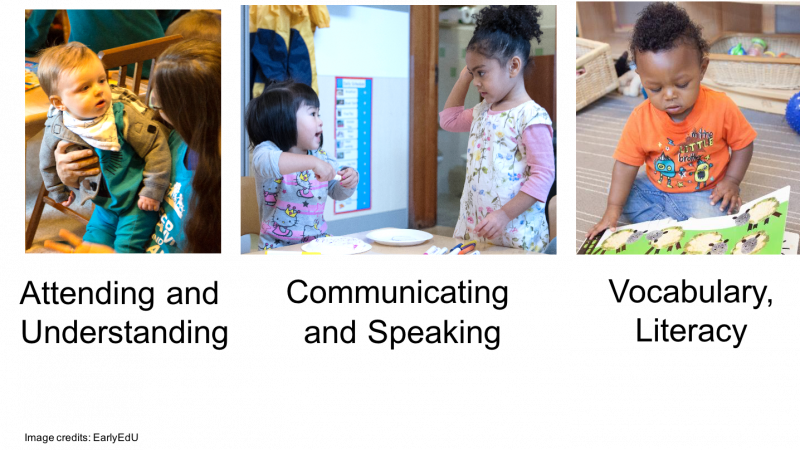
This domain includes the skills needed to communicate effectively with others. Children’s proficiency with language and literacy eventually affects their learning across all domains.
Cognition
The infant and toddler Cognition domain focuses on the development of reasoning, memory, and problem-solving. This domain encompasses the sub-domains Exploration and Discovery, Memory, Reasoning and Problem-Solving, Imitation and Symbolic Representation and Play, and Emergent Mathematical Thinking. Note that the images only illustrate three of the five subdomains.
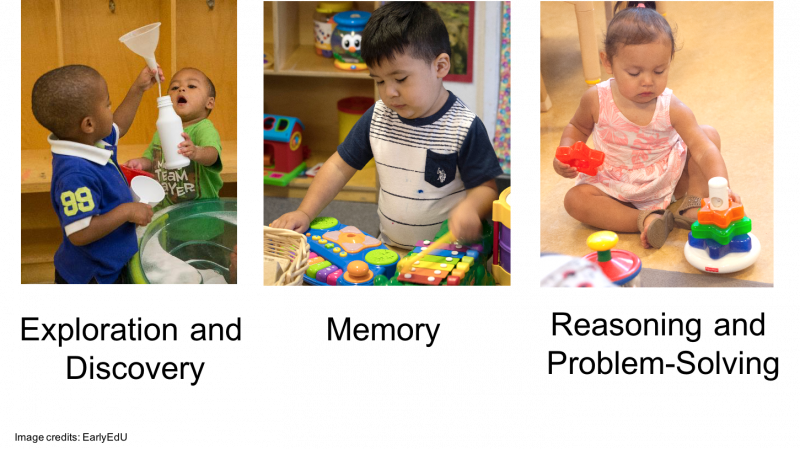
The skills that children gain in this domain eventually develop into math and science skills in preschool and beyond.
Perceptual, Motor, and Physical Development
The infant and toddler Perceptual, Motor, and Physical Development domain includes perceptual development, or how children engage their senses as they grow; motor development, such as walking, running, and grasping; and physical development, such as nutrition and hygiene.
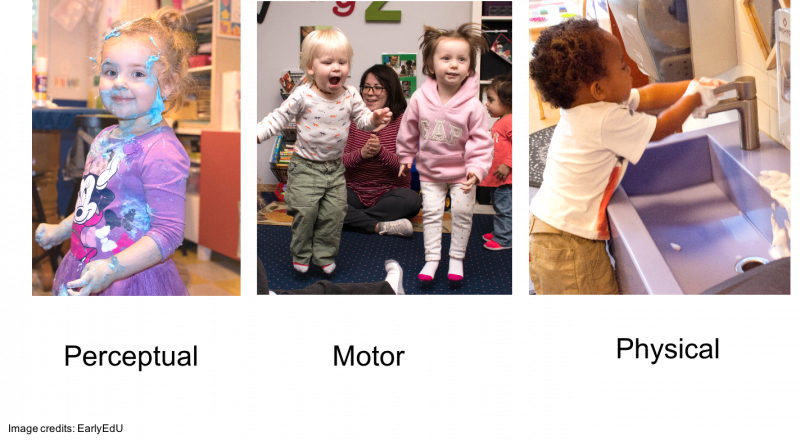
These are fundamental areas of development that support all other domains, whether cognitive, linguistic, emotional, or social. Without proper nutrition, solid sleep, or a safe environment in which to develop perceptual and motor skills, neither play nor instruction will do much to help build children’s cognitive, language, and social and emotional skills.
 Reference
Reference
U.S. Department of Health and Human Services, Administration for Children and Families, Office of Head Start. (n.d.). Head Start Early Learning Outcomes Framework: Ages birth to five. [Article]
EarlyEdU Alliance (Publisher). (2018). 10-2 Developmental indicators. In Child Development: Brain Building Course Book. University of Washington. [UW Pressbooks]

